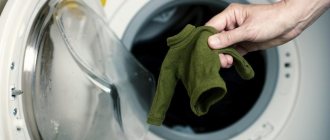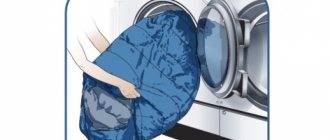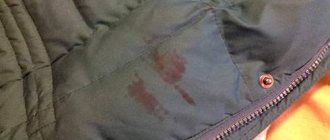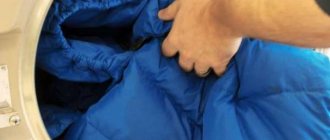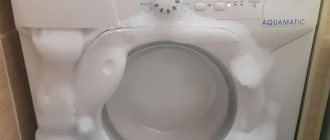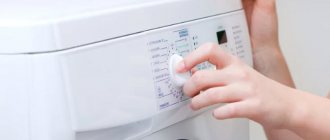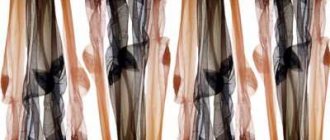Tourism is a wonderful hobby! Anyone who has ever gone camping will return to such a holiday again and again. But tourism and travel are not only about photographs and memories, but also about caring for camping equipment, including a tent.
Wet weather and rain can cause mold, unpleasant odors, and damage to the color and condition of your portable housing. Undoubtedly, the tent needs washing or cleaning. We’ll talk further about whether you can wash the tent in a washing machine or whether you should give preference to manual cleaning.
How to get rid of dirt and odor
Having unrolled your tent after a holiday or a hike, did you see lumps of dirt, stains and smell an unpleasant odor? Definitely, the tent needs a “big wash”.
What are the risks of machine washing? If you simply throw the tent into the CMA drum, you can wash off the protective layer that does not allow moisture and wind to pass through. Therefore, manufacturers strongly do not recommend affecting the product mechanically, so as not to damage this layer. And experienced tourists with experience are skeptical about washing in a machine and resort to this method only in critical situations.
But there is also good news! If you follow the rules, the product can survive machine washing, and even more than one. If the impregnation is washed off, it will be only in the places of folds - but this is a fixable matter: with the help of a special spray you can eliminate the losses.
How to properly wash tents
There is no doubt about whether tents are washed automatically. But everyone gives different advice on washing. We will give you the most proven rules. By following our recommendations, you will clean your equipment from dirt and odors, maintaining its functionality and attractive appearance.
So, let's look at how to wash a tent in an automatic washing machine:
- First, check whether the product will fit into the CM drum. Make sure that the weight does not exceed the maximum allowable weight of your machine. If the washer is rated for 6 kg and the product weighs 5.5 kg, wash it. And if the values are equivalent, think about it, because the fabric will get wet in water and become heavier.
- Then lay the cloth on a dry and clean surface. This could be a lawn in the yard or a garage.
- Arm yourself with a spray bottle and spray the fabric with plain water on one side, then rub with regular 72% laundry soap. Repeat for the second side.
- Without folding the product, place it in the CMA drum.
- Select a mode that does not involve heating water and spinning. The drum rotation speed in the selected mode should not exceed 500 revolutions.
- Do not use regular laundry detergents or gels.
- Wait for the cycle to finish and remove the tent. After the water has drained, place it in a ventilated place to dry.
- Inspect for scuffs or damage, treat them with a spray to restore the protective properties of the fabric.
Attention! Even if you have expensive and high-quality equipment, do not machine wash it more than 1-2 times during its entire service life. Frequent washing will lead to complete destruction of the layer, and none of the sprays will help you.
Types of materials for awnings
To solve the problem of the possibility of washing a collapsible tent, it is necessary to understand the characteristics of the materials from which it is made. About ten years ago, all tents (military, for travelers) were canvas.
Today's tents are multi-layered. The outer part of the awnings is made of dense, moisture-impregnated materials, the inner layers are made of breathable (membrane) materials that are no less durable.
The material of today's tents is of better quality than tarpaulin, impregnated from moisture and dirt, but it still needs care.
Today's tents are made from fabrics containing special fibers:
- UV-resistant, polyester. Strong, do not stretch when wet. The manufacturer uses high-quality materials (for example, lavsan) inside and out.
- Less resistant polyamide fabrics (nylon, nylon). Deformed by water and ultraviolet radiation. These materials are used to decorate the tent from the inside (walls and floor).
- When making tents, more than one type of fabric is used (mixed), but always with cotton fibers. They are also used for interior decoration.
To add strength, manufacturers use the latest technologies:
- weaving, which increases the strength of the material;
- adding thick synthetic threads that prevent the fabric from unraveling;
- They are treated with a special impregnation to prevent getting wet, which is important for raincoat tents.
The price depends on the properties of the awning. Canopies made of polyester fabrics are more expensive, but the quality of the material is much higher. Such a house will serve longer (up to 10 years), with careful handling and proper care.
How to restore the protective layer
If the protective layer is slightly damaged during washing, don’t panic! Purchase a product to restore the protective coating and return the product to its former properties. There are now a lot of options for such products on the market.
Let's look at the most popular of them:
- Nikwax . It is considered one of the highest quality impregnations. When using, it is important to follow safety precautions and work away from open flames. This product can be either sprayed or applied with a sponge, brush or even a cloth. Do not throw away the bottle after treatment - you will need the product to restore awnings, overalls, jackets and other travel equipment. For half a liter you can pay an average of 700 rubles. This is enough to saturate 7 square meters of fabric.
- Mcnett tentsure. A good impregnation, designed specifically for fabrics such as tents. Apply with a roller or brush. It is best to apply in two layers, allowing each to dry. Thick layers when applied are unacceptable, otherwise the effectiveness of the product will be lost.
- Waterproofing spray. This impregnation is made on the basis of silicone and is a universal product. It is used widely and actively for the restoration of tent fabrics. The downside is the high consumption and small volume of packaging, only 0.3 liters. The bottle is enough to treat only two “squares”. One such can costs around 500 rubles. Suitable for treating minor damage to folds.
Rules
How to properly machine wash a tent?
- Make sure that the tent fits into the washing machine drum and that its weight is less than or equal to the maximum load of the machine.
- Set up your tent somewhere clean, dry, like grass in your yard.
- Spray the tent fabric on one side first and rub it with a bar of laundry soap, then do the same procedure on the other side.
- Place the soap-rubbed tent without folding it into the drum of the washing machine.
- Set the washing mode without heating and spinning, and the drum should not rotate at a speed of more than 500 revolutions. Do not use powder or gel.
- Wait until the wash is finished, then remove the tent from the drum, let the water drain, and dry the tent. It is very important that the tent is completely dry.
- Carefully inspect the tent; all suspicious places should be treated with a spray that restores the protective layer of the fabric.
Important! Even a very high-quality tent can be machine washed only once or twice during its entire lifespan. If you wash it more often, it will most likely deteriorate and even the spray will not help.
Now let's figure out what compounds can restore the protection of a tent if you do damage it during washing. There are many options on the market, but there are only a few of the best formulations:
- Nikwax. One of the best impregnations for tents. It must be used carefully, away from sources of open flame. Nikwax can be applied to the damaged area using either a spray bottle or a cloth or sponge. Using Nikwax impregnation, you can restore awnings, backpacks, overalls, jackets, gaiters and the like. The average cost is 700 rubles for a 500 ml bottle, which is enough to saturate about 7 m2 of material.
- Mcnett tentsure. A very good impregnation for restoring damaged protective layers on tent fabric. Impregnation can be applied to damaged areas with a brush or small roller. The impregnation should be applied in a thin layer to the fabric, let the layer dry, and then apply a second layer and let it dry again. Do not apply impregnation in a thick layer - it is ineffective.
- Waterproofing spray. A universal silicone impregnation that is excellent for restoring tent fabric. The only negative is that the impregnation disappears quite quickly, and the capacity of the can is small - only 300 ml. It is enough to cover approximately 2 m2 of damage. The average cost of a 300 ml can is 470 rubles.
Handwash
If you use a tent as an avid tourist - a lot and often, and the product has already reached the washing limit in the SMA, then try hand washing. Unlike machine washing, hand washing can be done more often - once every 2-3 seasons.
Important! If you value your tent, try to avoid washing it. But if there is no other way out, unquestioningly follow all washing rules.
To wash a tent by hand, proceed as follows:
- Spread the product in the yard on the grass.
- Pour water and gently rub with laundry soap.
- Call a partner: one should water the fabric, and the second should rub the fabric with a soft sponge.
- Turn the tent over and repeat all the steps on the other side.
- Rinse off the foam.
- Dry.
- Treat with a special spray against unpleasant odors (the choice in travel stores is huge, for example, you can use Toko Proff - it will eliminate the smell of soap and mold). If smells are not a problem for you, you don’t have to spend money on a spray.
- Restore the protective layer with one of the sprays listed above.
Manually
You can either wash your tent in the machine very rarely or not at all. What should tourists who actively use a tent do, what should they do if the tent requires maintenance quite often? Experts advise resorting to dry cleaning or, as a last resort, hand washing.
Note! You need to wash your tent by hand very carefully and extremely rarely, about once every two or three tourist seasons.
If you want to save the item, it is better to do without washing at all, but if this is not possible, we will do the following.
- We spread the tent on the grass.
- We water the tent with water, and then rub it with a piece of laundry soap without unnecessary mechanical impact.
- Then you need to use someone's help, one person will water the tent with water, while you rub it with a sponge.
- Next, turn the tent over to the other side and do the same, rub it with soap and wash it off along with the dirt.
- Dry the tent and then spray it thoroughly with anti-odor spray.
There are quite a lot of anti-odor sprays on sale; you can take any one, for example Toko Proff. It will rid the tent fabric of the smell of mold and laundry soap, but if such odors do not bother you, you can do without the spray. Also remember that washing a tent is not so bad; you still need to check its protective layer after washing and, if necessary, restore it.
Let's do without washing
If you care about the safety of your tent, it is better not to wash it, but to clean it. Dry cleaning without unnecessary mechanical impact is the safest, but it does not remove dirt and odor as much as washing. What should be done?
After a hike, a wet and dirty tent should be hung in a dry, ventilated place and allowed to dry thoroughly. The fabric of a good tent is covered with sun-protective and moisture-resistant impregnation, so you can dry it even in direct sunlight, but it is better if you find a shaded place for this.
So, the dry tent needs to be straightened and inspected. Dried dirt stains and debris should be brushed off using a very soft brush or cloth. If stains remain in several places, you can treat them with a sponge soaked in soapy water. After such procedures, the tent is thoroughly dried again and then put into the storage room until the next trip.
So, it is theoretically possible to wash a tent in a machine, and it may not suffer from just one wash. But you must remember that when you wash a tent, you are taking a big risk. Washing can damage the protective layer of the fabric, after which the tent will become unusable. So, decide for yourself whether to wash it or not; our advice is to wash it only as a last resort, after dry cleaning has failed. Good luck!
mashmaster.ru
Dry cleaning
We have come to dry cleaning - the most gentle and harmless way to treat a tent. Cleaning has its pros and cons. On the one hand, the protective layer is intact, on the other hand, odors and dirt may remain.
So, let's start cleaning:
- Immediately after the hike, hang the product to dry.
- Straighten the product, look for stains.
- Clean the fabric with a soft brush or sponge. You can locally remove stains with soapy water.
- Arrange for drying in a ventilated place and pack the tent for the next camping season.
Let’s conclude that, in theory, it’s possible to wash a tent in the SMA, and maybe there won’t even be anything wrong with it. But always be aware of the risks when putting equipment into the drum. It is beneficial to restore the protective layer only locally; if it deteriorates completely, it will be easier to buy a new tent.
Only machine or hand wash if dry cleaning does not produce the desired results. Have a nice hike!
Mold Removal
If you neglect the rules of caring for the product, mold may grow on it. For example, if it lies damp for a couple of days. What to do in this case?
It is not advisable to clean a cheap tent - it is easier to throw it away and buy a new one. However, an expensive product is worth trying to save.
In tourist equipment stores you can find special anti-mold products (spray, for example). They use it to treat the inner surfaces of the tent and then set it up to dry.
Article on the topic: How to check the temperature sensor in a Samsung washing machine
Another method of getting rid of mold, the traditional one, involves using water and vinegar. You need to prepare a solution of 30% vinegar and 70% water in a large container. This composition will not harm the material itself, but will remove mold. You need to soak the tent in this bath and, using a brush, wash off the mold from the product.
Another option is to treat the affected areas with a soapy sponge, and then soak the product for several hours in a soapy solution. After this, rinse and dry.
Traditional methods should be used with caution and at your own responsibility - there are no guarantees that the tent will not lose its protective properties after such treatment.



